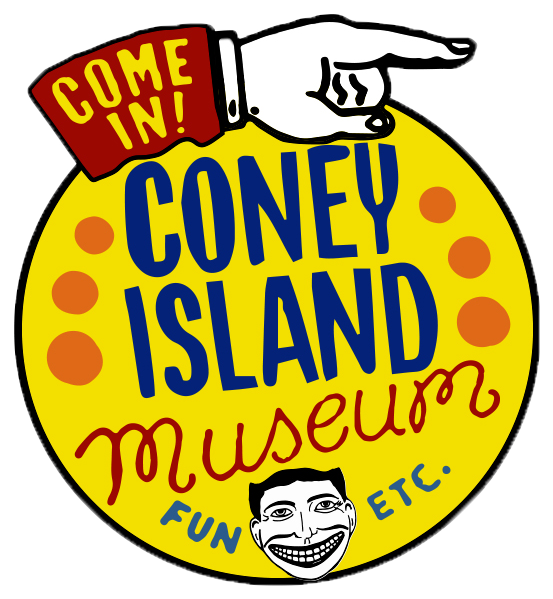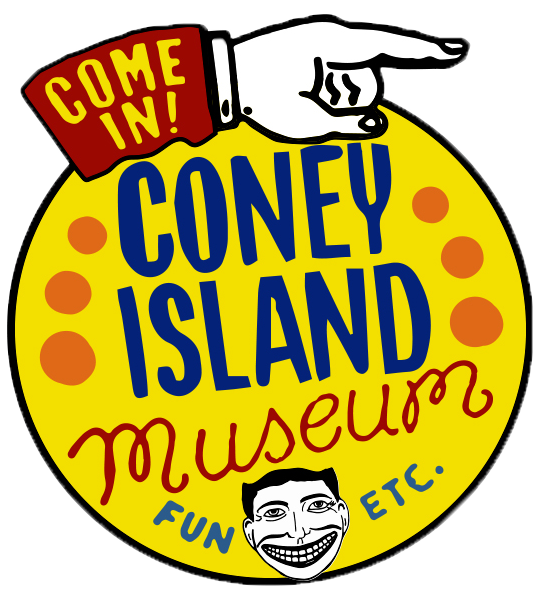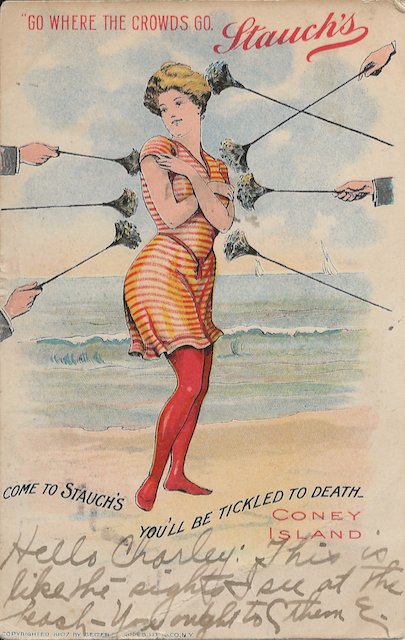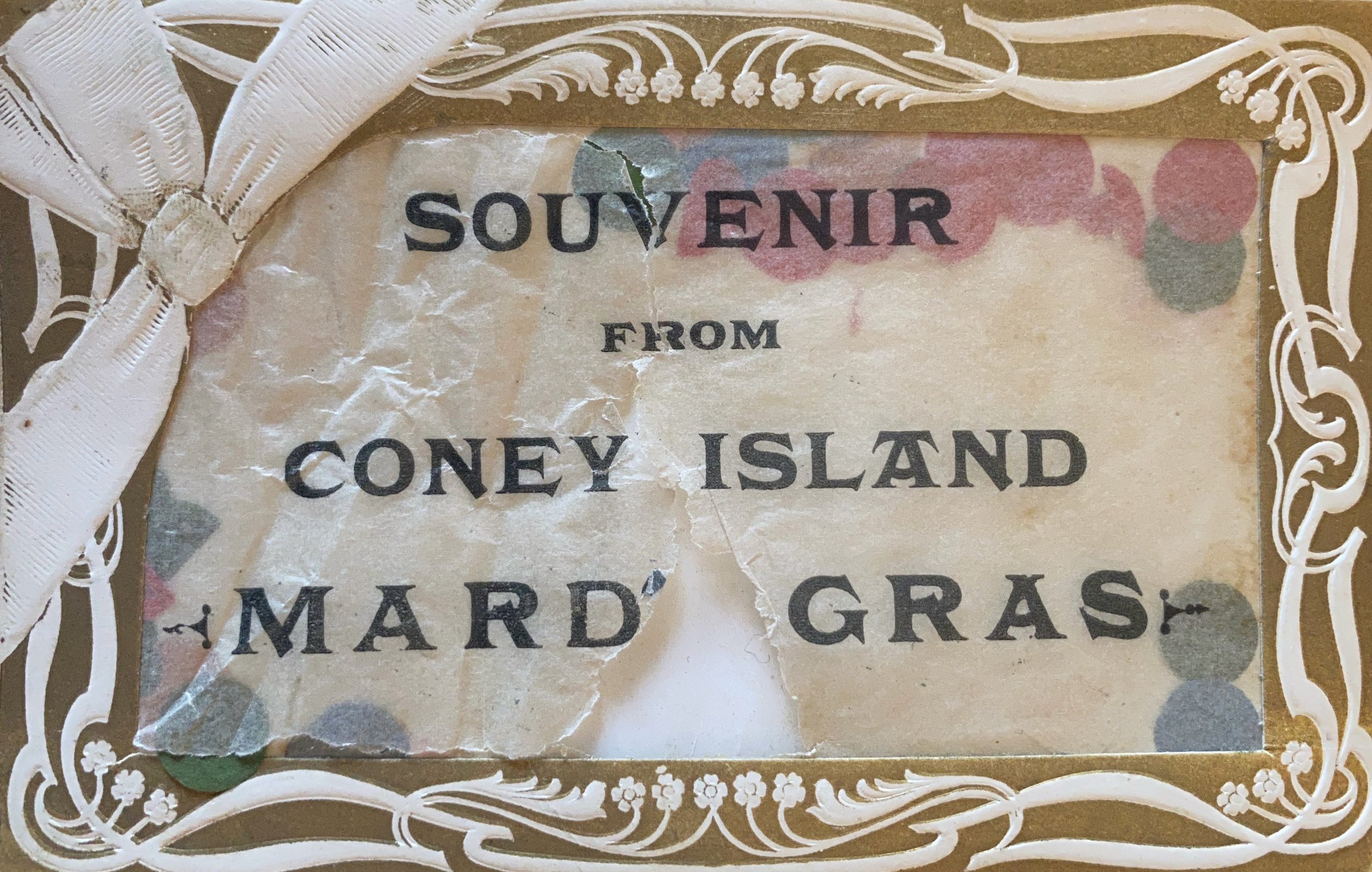Mardi Gras
The return of Coney Island USA’s beloved Mermaid Parade, on June 18, has us all thinking about costumes and glitter, marching bands, motorized floats, and joyous celebrations. Since 1983, the Parade has been the official kick-off for the summer season in the People’s Playground, and serves as an economic boon for the local community. What many folks don’t realize is that the Parade, one of the largest in the country, has its roots in Coney Island’s storied past. For 50 years, the historic amusement district marked the close of the summer with a week-long spectacle that featured parades, parties, and pageants.
Columbia University, Rare Books and Manuscript Library
Coney Island’s Mardi Gras was organized in 1903 by local businessman and restauranteur, Louis Stauch, as a benefit for the Mission and Rescue Home For Wayward Girls, which had been destroyed by fire in1902. What Stauch created was a wildly successful event that drew thousands of visitors to the amusement district at the end of the season, and would quickly become a platform for political and commercial branding.
Almost from the onset, the Mardi Gras was made infamous by its carnival-like atmosphere and the raucous behavior of many of its revelers. The earliest parades attracted “rowdies”, who delighted in harassing onlookers by crushing men’s straw hats, yanking their ties, and employing “ticklers”. On September 16, 1907, the New York Times reported “…The police ban has been put upon the ticklers, because last year rowdies concealed pieces of tin and long nails in them and jabbed them into the faces of the celebrators. The throwing of pepper and other offensive powders will be severely punished if the offender is caught…” Yikes! The bad behavior provoked hundreds of arrests, and it was several years before an adequate police presence (mostly) put an end to the widespread annual hijinks.
Postcard, 1907. Coney Island Museum collection
The schedule of events would be directed by the Board of Trustees, under the auspices of the Mardi Gras Association, or Coney Island Carnival Company. The Committee usually boasted a few local and state elected officials, as well a veritable who’s who of Coney Island “royalty” : Feltman, Grashorn, Gumpertz, Henderson, Mangels, Meinch, Nash, Stauch, Stubenbord, Tilyou, and many others.
Columbia University, Rare Books and Manuscript Library
After being crowned with much pomp, the King and Queen (usually a well-known businessman, and a society maven) would preside over the week’s festivities, which featured banquets, galas, and concerts attended by Brooklyn’s elite. Often, the royal couple would be presented with a ceremonial key, which they would toss into the ocean, symbolizing the close of the season. Themed parades were held throughout the duration of the celebration, with participants vying to win the “best of” title in their categories. Various unions and fraternal organizations were always well-represented in the yearly schedule of events, and contests and beauty pageants were also held. Positions of honor were awarded, often based on individuals’ worthiness, influence — or (we can suppose) their generosity.
Columbia University, Rare Books and Manuscript Library
Columbia University, Rare Books and Manuscript Library
A vehicle to promote local businesses, politicians and civic leaders; an expo for babies and beauty queens; a tribute to local police and firemen, the Coney Island Mardi Gras became an annual extravaganza that weathered Prohibition, the Depression, and World War II. Thousands of visitors attended each day’s activities, delivering an economic boost that would carry the amusement district through the off-season.
Felt pennant, 1916. Coney Island Museum collection ; currently on display in the East Gallery.
Postcard with confetti, undated. Coney Island Museum collection ; currently on display in the East Gallery.
The last Coney Island Mardi Gras was held in 1954. Diminishing crowds and poor returns for the local businesses had rendered the event unsustainable, and the iconic seaside playground had begun its inexorable slide into decline.
In 1983, Jane Savitt-Tennen, Costa Mantis, and Dick Zigun founded the not-for-profit arts organization, Coney Island USA, which produced the first Mermaid Parade. It was an homage to Coney Island’s original roisterous revels, and captured the imagination and creativity of the public. The modern-day bacchanal helped to renew the public’s interest in the faded amusement district, and fuel its current revitalization. The Mermaid Parade is one of New York City’s largest, and attracts close to 1 million spectators and participants annually. We hope to see you there!
Courtesy of the A.G. Mangels Family ; currently on display in the Coney Island Museum East Gallery.









